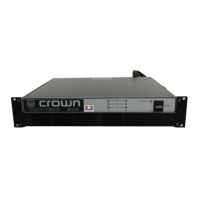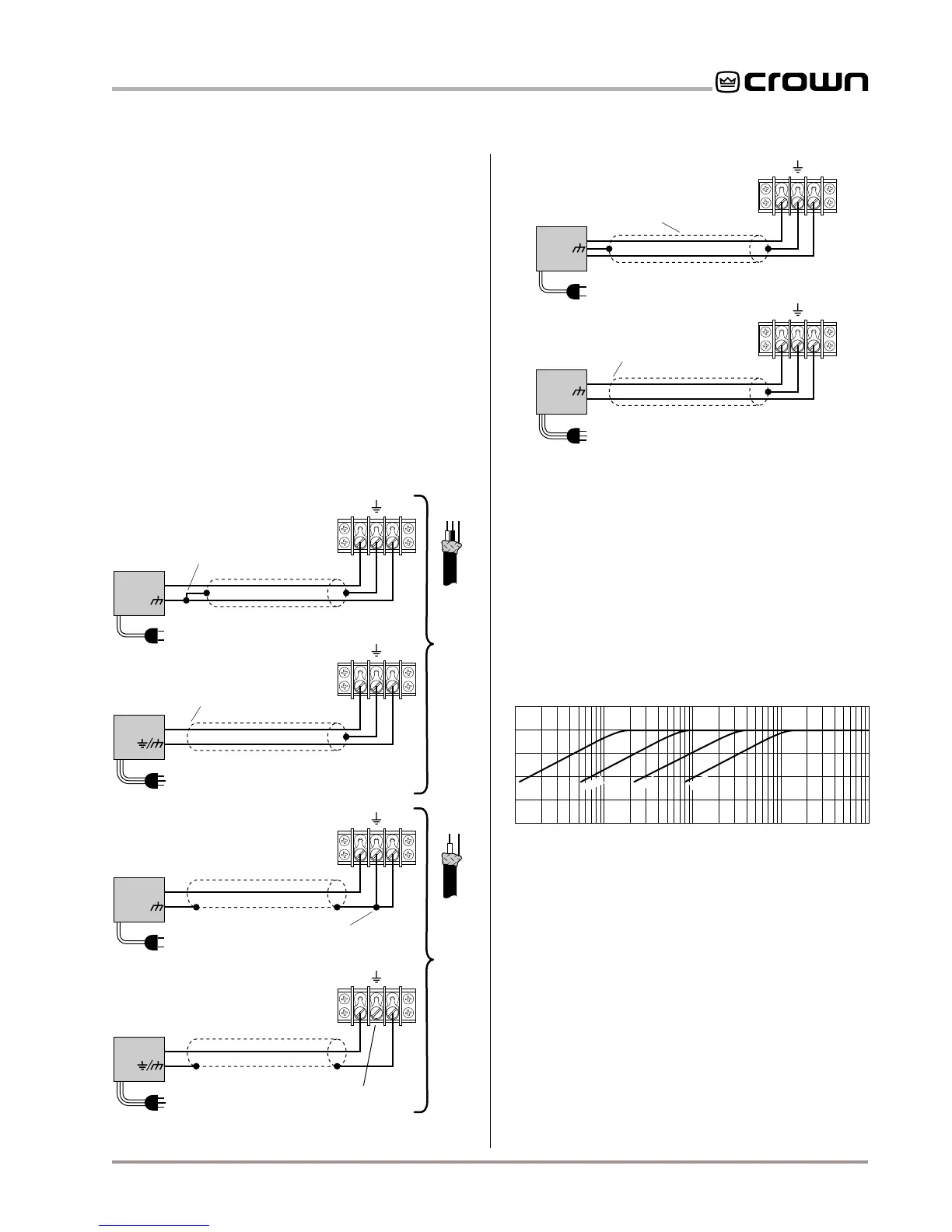

Do you have a question about the Crown Com-Tech CT-1600 and is the answer not in the manual?
| Channels | 2 |
|---|---|
| Frequency Response | 20Hz - 20kHz |
| THD | <0.05% |
| Signal to Noise Ratio | >100 dB |
| Input Sensitivity | 1.4V |
| Power Output | 1600W |
| Total Harmonic Distortion | <0.05% |
| Input Impedance | 20k ohms balanced, 10k ohms unbalanced |
| Dimensions | 19" x 3.5" x 16" |
Summary of Crown warranty terms for global coverage.
Summary of Crown warranty terms for North American coverage.
UL listing and requirements for fire alarm systems.
Procedures for unpacking and checking for shipping damage.
Key technological advancements and benefits of the amplifier.
Description of indicators, switches, and connectors on the front panel.
Description of rear panel switches, inputs, and outputs.
Guidelines for physically installing the amplifier in racks or stacks.
Importance of ventilation and methods for optimal cooling.
Guidance on connecting inputs, outputs, and various wiring configurations.
Details on connecting input signals and solving input problems.
Details on connecting output loads and using good connectors.
Methods for protecting loudspeakers from power issues.
Information on power requirements, cords, and outlets.
Essential safety and operational advice for using the amplifier.
Explanation of ODEP, IOC, SPI, and Enable indicator states.
Description of ODEP, standby, and circuit breaker protection features.
Details on using level controls, sensitivity switches, and filter cleaning.
Introduction to Com-Tech technology and design principles.
Explanation of dual, bridge-mono, and parallel-mono circuit operation.
Details on frequency response, distortion, damping factor, etc.
Guaranteed minimum power output under various conditions.
Specs for controls, indicators, input impedance, and sensitivity.
Information on build, dimensions, weight, and cooling design.
Detailed power output tables for Com-Tech 200.
Detailed power output tables for Com-Tech 400.
Detailed power output tables for Com-Tech 800.
Detailed power output tables for Com-Tech 1600.
Tables showing maximum power output under burst conditions.
Maximum power output tables for CT200 under burst.
Maximum power output tables for CT400 under burst.
Maximum power output tables for CT800 under burst.
Maximum power output tables for CT1600 under burst.
Graphs showing amplifier frequency response and damping factor.
Graphs detailing phase response and channel crosstalk.
Introduction to Programmable Input Processor modules and their functions.
Details and installation for the optional cooling fan kit.
Information on the audio application slide rule.
Procedures for obtaining service globally.
Procedures for obtaining service within North America.